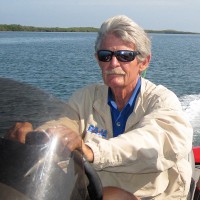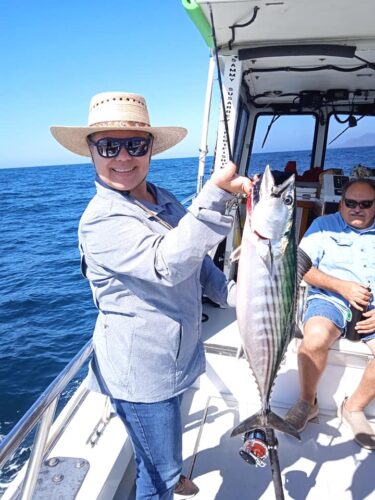
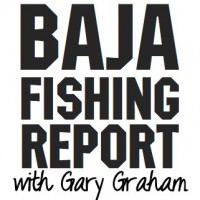 October ended with a rash of cranky weather from the border down to Ensenada. However, sea temps remained reasonable, and once the grumpy weather settled down, the catch reports included rockfish, reds, sheepshead, and whitefish.
October ended with a rash of cranky weather from the border down to Ensenada. However, sea temps remained reasonable, and once the grumpy weather settled down, the catch reports included rockfish, reds, sheepshead, and whitefish.
There are still some small yellowtail, bonito in the 4 to 8-pound class, calico bass, and a few legal-sized barracuda.
The best bet will likely be fishing for big quality reds, bocaccio, and a few lingcod on the high spots. Reports are that fishing these with live mackerel produces very impressive-size fish, and the best depth to find them is between 450 to 650 feet.
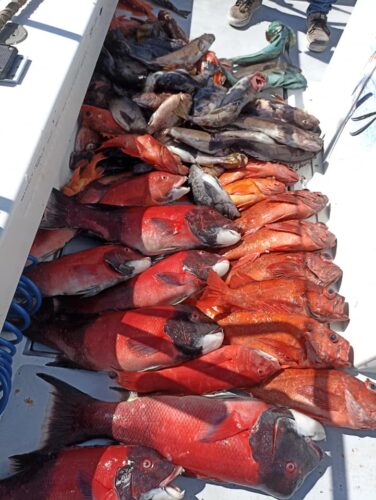
Ensenada’s local fleet depends on a continuing bottom fish bite mixed with occasional surface action for small yellowtail, bonit0, and a few legal barracuda to keep their clients smiling.
Recently, San Quintín has been quiet. The offshore action for bluefin and yellowfin tuna may be out there still. However, few clients have been willing to brave the rough conditions to find out. Instead, they opt for the calico bass bite or bottom fishing at the Island with hopes they may maybe stumble into a white seabass or three.
Meanwhile, Cedros Island is wrapping up a banner season finishing up in early November. The Island will reopen in July 2022.
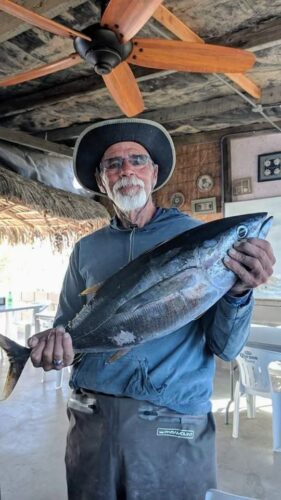
As expected, at Bahía Asunción the season is beginning to wind down. Still a few pelagics are left to be caught, including dorado, small yellowfin, and skipjack with a few more home guard yellowtail, and for the surf fishermen, there are still some corvina lurking in casting range.
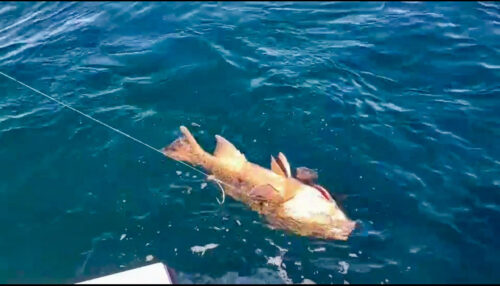
Over on the Sea of Cortez side, anglers are still finding some giant grouper at Bahía de Los Ángeles.
Gonzaga Bay is also coming to the end of its season as the north winds ramp up.
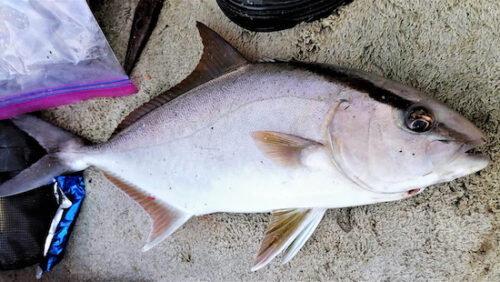
At Punta Chivato, the locals are picking their days carefully to dodge the North Wind. However, there are roosterfish along the shore, a mixed bag of bottom fish, and some dorado for the persistent. Some fishing near San Marcos dredged up another critter that sent them scurrying back home to look it up on Gene Kira’s maxfish.com. It was another one of the many sub-species of the Jack family.
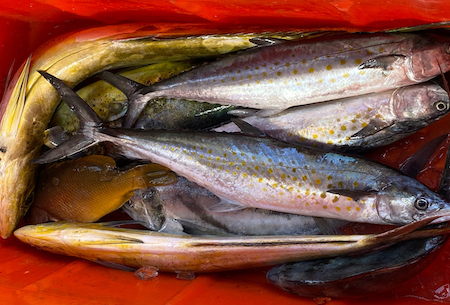
At Loreto, the sierra are shredding up schools of sardina, while small roosterfish are stirring up the whole mess!
From the arroyo south of town and continuing all the way south to Punta Coyote, slow-trolling live sardina for sierra and roosterfish from 5 to 10-pounds with dorado mixed in has kept things exciting!
Dorado fishing is still very productive, although many boats have begun to redirect their focus to yellowtail. Almeja Reef has been kicking out fat reds and yellows to 15 pounds on both iron and sardina. Boats are jigging mackerel every morning a few miles east of the marina.
Punta Lobo and the nearby rock piles are the best spots to soak mackerel. Unfortunately, big fish are intermixed with swift currents in this area, which makes pulling the bigger fish off the bottom a major challenge!
Over at Magdalena Bay, it has been one of the windiest Octobers in a while. The striped marlin are still offshore, but they are difficult to get to with the strong wind.
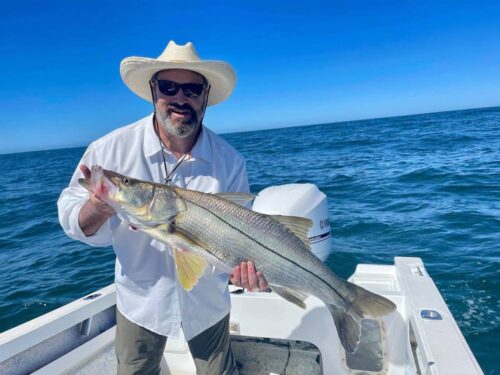
In the Bay, surrounding Lopez Mateos, the inshore fishing has been extraordinary for fly and conventional anglers. Snook (one of my personal favorites) has been on the bite along with golden trevally, pargo, and grouper. There have been more of the same at Puerto San Carlos.
At La Paz, many days of fishing are just fine. Other days, the winds have blown very strong, preventing the fleet from going out. The weather can be so unpredictable. It can start out windy and rough, then flatten out. It can look great in the morning, but the northern winds are whipping things up by afternoon. As a result, the weather has changed earlier this year than usual.
The dorado bite continues to be very good, so there’s still warm water out there. Anglers found larger fish this past week with 20+ pound dorado not unusual. Both Las Arenas Fleet and La Paz fleet had good action on these fish.
The most significant indicator of the season change is the appearance of the cooler-water species. Sierra have been biting steadily now for more than two weeks. They are also getting some yellowtail, rainbow runners, and amberjack which are also cooler water species. Pargo liso (mullet snapper) are usually not caught until the late winter or spring – same with the palometa and pompano, as well as the bonito, jack crevalle, and snapper.
The dorado are biting sardina and small lures south from the Lighthouse to Frailes in good numbers at East Cape.
There have been multiple releases for boats targeting billfish, and striped marlin are mixed with a few sails. The best fishing is on the drop-off directly in front of La Ribera. Trolled lures and ballyhoo are the best bait.
Some excellent 30 to 50-pound class yellowfin are being taken on sardina off Rincon along the Pulmo Park border.
Some big skipjack to 10-pounds, as many as anglers want to pull on, are spread across the Bay.
Many pompano and pargo are found off the lighthouse, Punta Colorado, and the drop-offs at La Ribera. Live sardina and chunked skipjack are working best.
Gordo Banks is producing yellowfin in the 50 to 120-pound range, with a few smaller football-sized fish showing as well. This action is the best option for now, so this has meant heavy pressure on this one spot. There is some bottom action on these same grounds, but more triggerfish than anything else, although there were a few amberjack, cabrilla, and pargo. The dogtooth snapper bite was fading out this past week.
Wahoo and dorado were scarce as well. However, more dorado were found than wahoo, and most of these were under ten pounds. A few smaller roosterfish were found along the shore, and it was the beginning of sierra season as well. Although bill fishing is slow, a few sailfish and smaller-sized striped marlin were found.
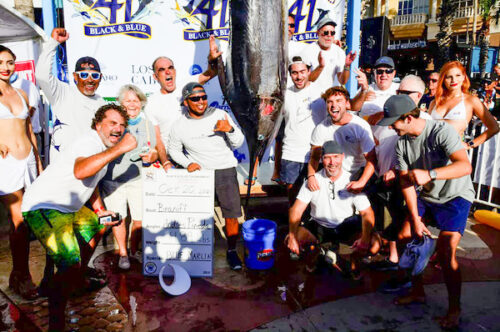
In Cabo San Lucas, there is still plenty of dorado and tuna offshore. And a few boats have been targeting the inshore.
The billfish action was dismal, with only a handful of fish brought to the scale during the Bisbee Tournaments with 198 Teams. However, the largest of the four blues caught was a 489-pound blue marlin earning the Team Braniff $1,134,350.
Tight Lines-Gary Graham-That Baja Guy

With more than five decades of fishing experience – from light tackle and fly to offshore billfish – Gary Graham has experienced all aspects of fishing in the Southern California and Baja waters. His observations of species behavior, tackle and techniques are always from his unique perspective, earning him the respect of his peers as well as anglers who eagerly follow his Baja reports and features.
Gary maintained a home at East Cape in Baja Sur for more than 18 years and still spends nearly half of each year exploring the entire peninsula in his self-contained Roadtrek van. He observes everything Baja, from the mysteries of a tide pool on a deserted Baja beach filled with tiny sea creatures to the largest billfish in the sea.

